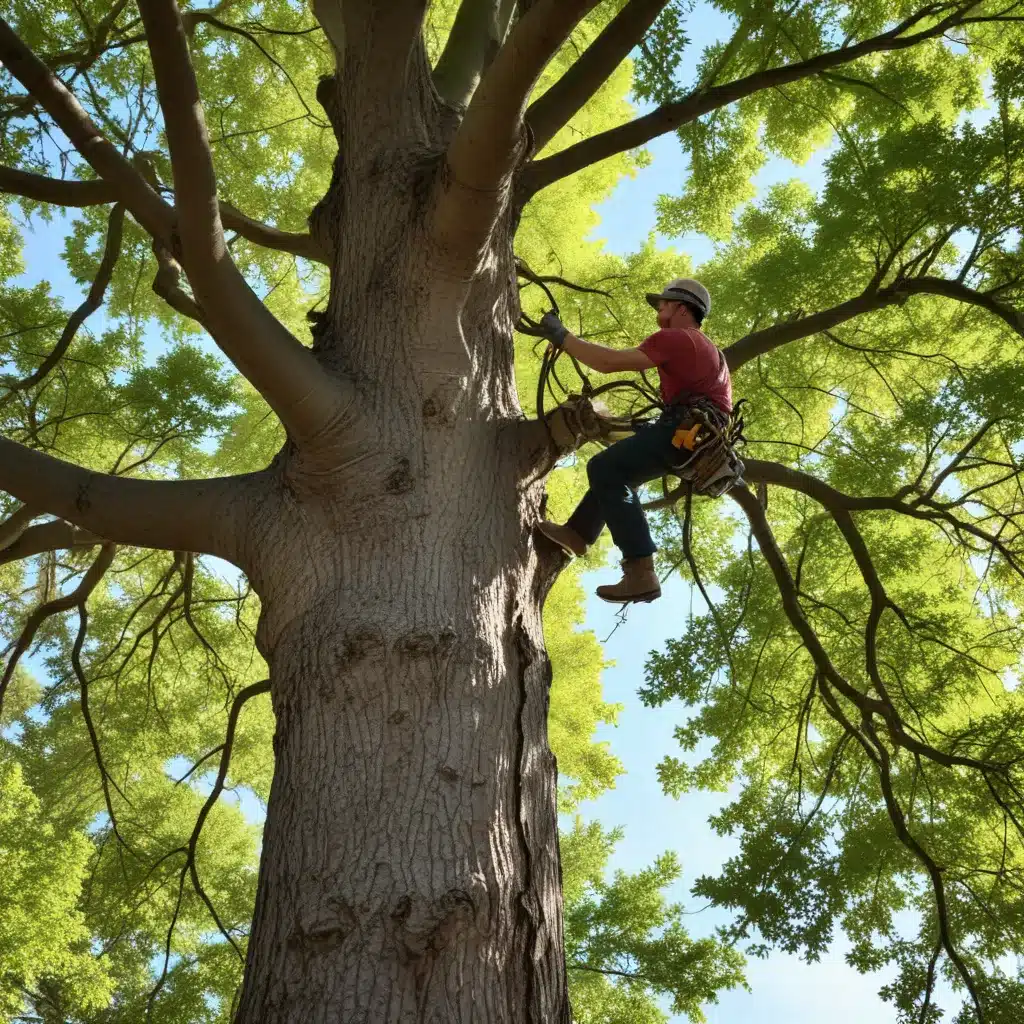
Maximizing Tree Potential Through Tailored Seasonal Maintenance
As a tree care specialist at TriCounty Tree Care, I’m excited to share insights into optimizing the health, productivity, and longevity of your trees through strategic seasonal maintenance. From pruning techniques to pest management, understanding the unique biological needs of trees is key to unlocking their full potential.
Seasonal Considerations
Spring Preparation
In early spring, when the sap starts to flow, it’s the ideal time to prune your trees. Structural pruning shapes the tree’s framework, removing competing leaders and thinning the interior to enhance airflow and light penetration. This prepares the tree for the growing season ahead, promoting denser foliage, larger fruit, and improved pest and disease resistance.
Summer Care
As the heat of summer settles in, consistent watering becomes crucial. Deeply watering your trees every 7-10 days, applying 2-4 inches of water per session, encourages deep root growth and drought resilience. Mulching the root zone with 2-4 inches of organic material like wood chips or leaf litter helps retain soil moisture and suppress weeds.
Autumn Upkeep
As leaves begin to change color and drop, it’s time to consider fertilization. Applying a balanced, slow-release fertilizer tailored to your tree’s specific nutrient needs can bolster root development, winterize the tree, and set the stage for vibrant spring growth. Avoid late-season pruning, as it can stimulate new growth that is vulnerable to winter damage.
Winter Protection
During the dormant season, your trees require a different type of care. Renovation pruning, which involves more extensive removal of dead, damaged, or undesirable branches, can revitalize older or neglected trees. This is also an opportune time to address any structural issues, as the bare branches make defects more visible.
Tailored Maintenance Strategies
Pruning Techniques
Pruning is a crucial component of tree care, and the approach varies depending on the tree’s age, species, and overall health. Structural pruning in the early years shapes the tree’s framework, establishing a strong central leader and evenly spaced, well-attached branches. As the tree matures, renovation pruning can rejuvenate its appearance and vigor, removing crossing or crowded limbs to increase light and air penetration.
Fertilization Regimes
Providing the right nutrients at the appropriate times can significantly enhance tree health and productivity. A soil test can reveal any deficiencies or imbalances, allowing you to create a customized fertilization regime. Applying a slow-release, balanced fertilizer in the fall ensures your trees have the resources they need to thrive through the winter and spring.
Pest and Disease Management
The Pacific Northwest’s mild, moist climate can foster a variety of tree pests and diseases, from aphids and scale insects to fungal infections like anthracnose and fire blight. Proactive monitoring and early intervention are key to preventing these issues from escalating. Integrated Pest Management (IPM) strategies, combining cultural controls, biological controls, and judicious use of pesticides, can help safeguard the health of your trees.
Tree Biology and Physiology
Understanding the underlying biological processes that drive tree growth and development is essential for tailoring your maintenance approach.
Photosynthesis and Growth
Photosynthesis, the process by which trees convert sunlight, water, and carbon dioxide into glucose, is the foundation of their growth and vigor. Ensuring adequate sunlight exposure through strategic pruning enhances photosynthetic activity, leading to more robust foliage, stronger branches, and potentially increased fruit or flower production.
Root System Dynamics
A tree’s root system is the unseen foundation that anchors the plant and absorbs essential water and nutrients from the soil. Maintaining optimal soil conditions, such as proper drainage, adequate organic matter, and balanced pH, supports the development of a deep, extensive root network, which in turn bolsters the tree’s overall health and resilience.
Seasonal Dormancy
During the winter months, deciduous trees enter a state of dormancy, redirecting their energy resources from above-ground growth to root development and strengthening their woody structures. Recognizing and respecting this natural cycle is crucial, as it informs the timing and focus of your maintenance activities, such as pruning and fertilization.
Maximizing Tree Potential
By aligning your maintenance practices with the unique biological needs of your trees, you can unlock their full potential, enhancing their health, aesthetics, and ecosystem services.
Enhancing Tree Health
Implementing a comprehensive care regimen that addresses the key factors of sunlight, soil, and water can dramatically improve the overall health and vigor of your trees. Healthy, thriving trees are better equipped to withstand pests, diseases, and environmental stresses, ensuring their longevity and productivity.
Promoting Aesthetic Appeal
Well-maintained trees not only contribute to the beauty of your property but also enhance the overall character and value of your neighborhood. Thoughtful pruning, strategic placement, and the incorporation of diverse, aesthetically pleasing species can transform your landscape into a true work of living art.
Increasing Ecosystem Services
Trees are remarkable natural assets, providing a wealth of ecosystem services that benefit both the environment and human well-being. From sequestering carbon and improving air quality to supporting biodiversity and regulating stormwater, the value of healthy, thriving trees extends far beyond the boundaries of your property. By optimizing their potential, you contribute to the greater good of your community and the planet.
Unlocking the full potential of your trees requires a holistic, season-specific approach to maintenance. By understanding the unique biological needs of your trees and tailoring your care regimen accordingly, you can cultivate a vibrant, resilient, and ecologically valuable urban forest. For more information or to schedule a consultation, visit TriCounty Tree Care.


